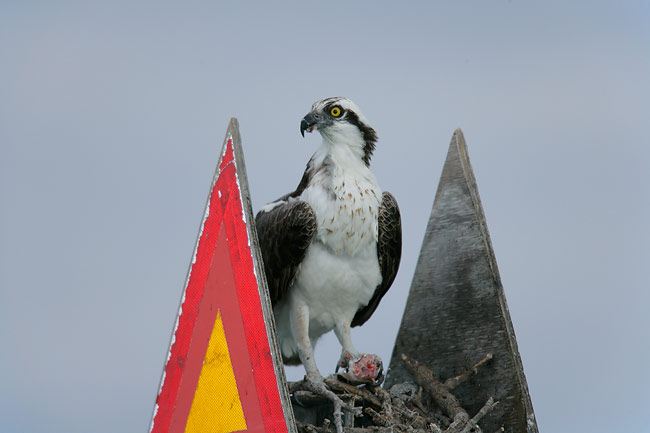BIRDS AS ART BULLETIN #225
Visit: www.birdsasart.com
SW FLORIDA/PRESIDENT'S HOLIDAY 5-DAY IPT REPORT
IPT KUDOS
COMING SOON: ROBERT O'TOOLE'S "ADVANCED PHOTOSHOP TECHNIQUES AND TIPS SIMPLIFIED” PDF
ROBERT O'TOOLE'S BAA/IPT PHOTOSHOP WORKSHOPS
MORE ON THE NEW EOS-1D MARK III
BAA CENTRAL FLORIDA PONTOON BOAT 5-DAY/10-CRUISE TRIP
ICELAND
DELKIN SENSOR SCOPE SYSTEM
NYC SEMINAR
IPT UPDATES
Contact us by phone at 863-692-0906 (Eastern Time Zone) or by e-mail at birdsasart@att.net or birdsasart@verizon.net. The att e-mail address is best from overseas.
We gladly accept credit card orders by phone 8am till
You can use the Paypal links on the web site to order anything. Just type in the item(s) and the amount. If using your own Paypal account, please send to either of the e-mail addresses above.
Photographic theme: My favorite images from the SW Florida/Persident's Holiday IPT.
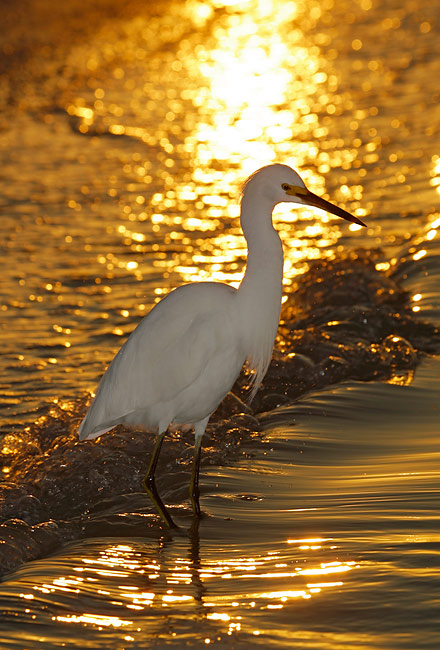
Snowy Egret, Sanibel Fishing Pier, Sanibel, FL
Image Copyright 2007: Arthur Morris/BIRDS AS ART
Canon 100-400mm IS L Zoom Lens handheld at 210 mm with the EOS-1Ds Mark II. ISO 160.
Evaluative Metering -1 stop: 1/640 sec. at f/11 in Av Mode.
High Speed Synch flash on camera at +1
Here I used lots of flash to illuminate the shaded side of the bird. Once the weather improved, I felt that bringing the group back to the fishing pier was the best move. On IPTs, I always explain my decisions to the group so that they can be in a better position to make good decisions when they are on their own.
SW FLORIDA/PRESIDENT’S HOLIDAY 5-DAY IPT REPORT
I was joined on the evening for February 16 by 14 eager photographers for our introductory programs. Only one of the participants was a Florida resident but Michael’s Katz’s wife Annie lives in Aspen, Colorado so he barely qualifies. (They are very happily married <smile>) I meet Michael and Annie on our Kenya trip last year and we all became fast friends. They have signed up for all of your scheduled trips to both Kenya and Tanzania. There were six folks from Arizona, two from Connecticut, two from Vermont, one from Kansas, and on from Lafayette, Louisiana (home of Wes & Patti Ardoin). Everyone was looking forward to the warm Florida sunshine.
Great plan, except for the fact that a big cold front was headed our way… As is traditional, we spent our first morning at the Venice Rookery. In all the years that I have been visiting, this nesting season is the worst that I have ever seen for photography. To make matters worse, it was very cold, about 38 degrees. There are very few nests on the east side of the island and very, very few chicks. The Great Egrets has not begun nesting when we were there. We arrived way-predawn and did enjoy some excellent fly-offs and flash-blur opportunities. I was amazed to see and photograph two blast offs of Black-bellied Whistling Ducks from somewhere behind us (to the east). There was very little activity once the sun came up, but a large group of Cattle Egrets flew from the rookery island and landed in the Brazilian Pepper bushes on the far shore. We had everyone get their short lenses, went through the exposure, and started creating some good pictures. I had borrowed a 1Ds from Canon Professional Services so that I could have two to work with and just as the light began to get crappy was aghast to see that the camera was set to J-PEG small. (I had set up the camera with all of my custom functions and the proper menu settings but I forgot to check and see that I was in RAW. Another lesson learned; you gotta love it!)
That afternoon we did well with the Brown Pelicans and then boarded Captain Marian Schneider’s (Grande Tours: http://www.grandetours.com/photography.htm) big pontoon boat “Recovery Room” and had a great time with some Ospreys nesting on the channel markers and with the White Pelicans, the latter after almost have a dolphin jump into the boat with us. I woke early the next morning eager to head off to Sanibel Island, but when I peeked out the window I saw that the palm trees were being thrashed by a vicious northwest wind and that it was pouring rain. I checked the weather forecast and learned that there was supposed to be bright sun no later than mid-morning. I gathered the group, told them that we would meet at 7am, head to McDonalds and grab a quick breakfast, and then meet in my suite for a morning of Photoshop instruction. I explained that even though it would be sunny soon, that it would be a waste of our time to go out and photograph because of the strong winds. With the sun in the south and the winds from the northwest every bird would be flying into of facing into the wind. I asked them to trust me and further explained that by getting a great morning of Photoshop out of the way we would free ourselves up for the better weather that was coming. As it turned out, it was the perfect move...
After lunch we went to the Sanibel Fishing Pier which, with the high winds, was not too good. We decided to take a walk on the beach past the light house with a few pounds of thawed bait fish and a loaf of bread for the gulls. There were piles and piles of red algae on the beach making shorebird and gull photography difficult. We did our best and about an hour before sunset we started to head back to the fishing pier when I saw a single Brown Pelican land about 300 yards offshore. I screamed to Robert Amoruso, "Throw him some fish" and asked the group to start shouting to attract the bird's attention. He flew about one hundred yards towards us and alit on the Gulf again. We kept it up and within a few minutes had four pelicans flying around after our tossed fish. The light was gorgeous and with the northwest wind we finished off the day with some fantastic flight photography opportunities. Never a doubt...
On our third morning it was still cold and windy. We had a brief chance with some spoonbills at Ding Darling, found no birds at Blind Pass and no birds at Bowman's Beach. I decided to try my last-ditch spot by the toll booths and we did fairly well there with the Brown Pelicans. (You can learn all about these usually productive spots in our SW Florida Site Guide: http://www.birdsasart.com/siteguides.htm#SW%20FLORIDA%20SITE%20GUIDE%20AVAILABLE. We did the Burrowing Owls an Cape Coral that afternoon and (thankfully) found very one cooperative pair. (You can find detailed info on Burrowing Owl locations in the above-mentioned Site Guide.) As the weather forecast was good we headed to Little Estero Lagoon on our fourth morning. It was spectacular; there were dozens and dozens of wading birds feeding everywhere on a nice low tide. We headed back to the motel with lots of great images to download. After lunch and a nap we returned to the Sanibel Fishing Pier and found all the birds that had not been there in the wind; as expected, the Snowy Egrets were the stars of the day. We finished off with some nice sunset color. We spent our fifth and last day back at Little Estero Lagoon and enjoyed a fantastic day. I kissed everyone good bye and got ready to head over to Everglades National Park early the next morning.
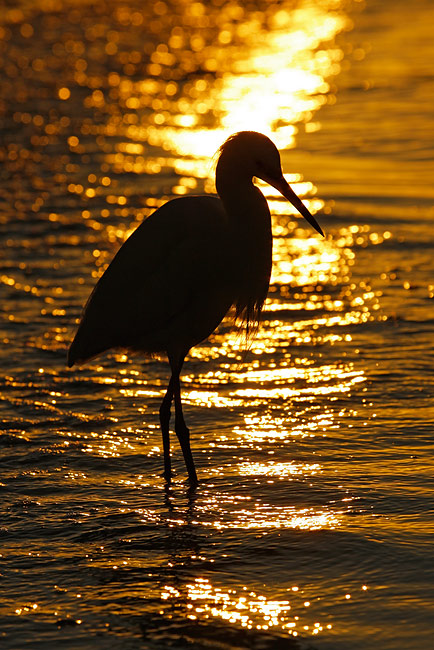
Snowy Egret, Sanibel Fishing Pier, Sanibel, FL
Image Copyright 2007: Arthur Morris/BIRDS AS ART
Canon 100-400mm IS L Zoom Lens handheld at 250 mm with the EOS-1Ds Mark II. ISO 160.
Evaluative Metering -1 stop: 1/1000 sec. at f/11 in Av Mode.
Flash did not fire.
This is the same bird in the exact same situation as above. This image was made 17 seconds prior to the image above. I fired a burst and after the first image or two the flash did not have time to recharge and thus did not fire. I often hold the shutter button down to ensure that I create at least one image with flash and one without. As you can see, they are totally different images.
IPT KUDOS
Via e-mail from Rod Vallee,
Betty and I would like to thank you for a great photographic learning experience with a bonus of obtaining some fantastic images. Having missed the Lake Martin IPT last spring, we just couldn't wait until February. The IPT was exactly what we were looking for, experience in motion and flash photography. We are now blasting away and creating some images that have that "Birds As Art" touch. You and your wonderful crew had loads of patience for these old folks (the oldest I think) and I hope our off-site residence did not cause any problems. Sorry I missed the last session but the old knee just didn't have anything left. Hope we meet again in the near future.
Rod
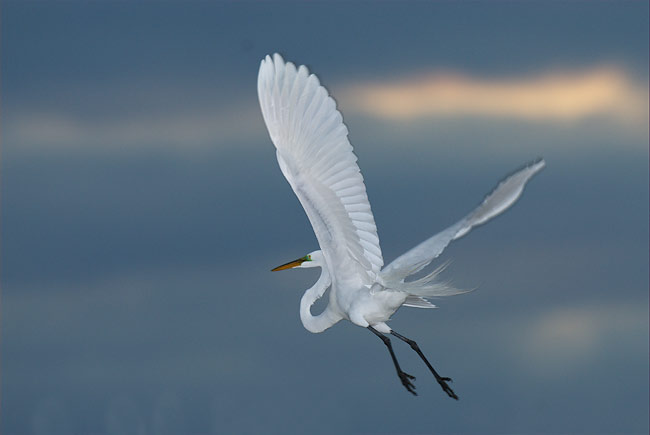
Great Egret pre-dawn flash flight, Little Estero Lagoon, Ft. Myers Beach, FL
Image Copyright 2007: Rod Vallee/IPT participant
Image created with Nikon equipment/technical data not available
Rod was laptop-less and asked me to convert this image and perform Photoshop magic on it. After converting the image in Breezebrowser, I was surprised at how good it looked as conversion options when working with Nikon files are somewhat limited. But heck, it worked quite well in my opinion. I used the ”Eye Doctor” techniques described in Digital Basics to save this one… Rod joined the IPT in hopes of improving with flash and making better images of birds in flight and in action. Here he succeeded in a single frame! You gotta love it. To learn more about Breezebrowser Pro and Downloader Pro, click here: http://www.birdsasart.com/breezebrowser.htm
COMING SOON: ROBERT O'TOOLE'S "ADVANCED PHOTOSHOP TECHNIQUES AND TIPS SIMPLIFIED" PDF (APTATS)
More than two thousand folks have cut their digital and photoshop teeth on our Digital Basics file, and I am certainly proud of everything that I have learned (most of it with the help of others), proud of all the folks who have learned to optimize their images quickly and efficiently thanks to Digital Basics, and even more proud of how my images look. When I watch Robert O'Toole sit down to work on his images, I feel totally inept. Robert is simply amazing when he performs his Photoshop magic. Last week, at my urging, Robert began work on his "Advanced Photoshop Techniques and Tips Simplified" (APTATS). See the next Bulletin for some examples of Robert's amazing talent. See Bulletin 224 to learn about Robert's small groups workshops. See the White Ibis flight image below for more about Robert. And I will guarantee that when—in the next Bulletin, coming soon—you see some of the things that Mr. O’Toole can do, you will not believe your eyes…
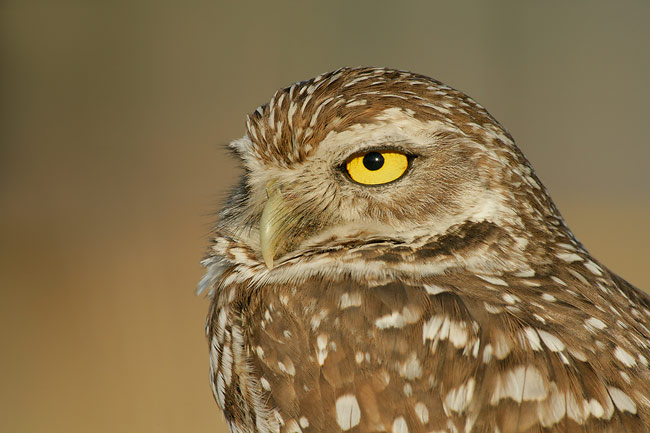
Burrowing Owl, Cape Coral, FL
Image Copyright 2007: Arthur Morris/BIRDS AS ART
Canon 600mm f/4L IS lens with the 1.4X II TC, a 25mm Extension Tube, and the EOS-1Ds Mark II. ISO 400.
Evaluative Metering +1/3 stop: 1/125 sec. at f/9 Av Mode.
This may have been the world’s most cooperative Burrowing Owl. We set up two Canon and two Nikon rigs and had folks swap flash cards as the bird just sat and posed for us for well more than an hour. Getting right down on the ground yielded a pleasing out-of-focus background. As the Panning Ground Pod would have put me too low (the subject would have been blocked by foreground grasses) I used the BLUBB to get just a bit higher. We actually have eight BLUBBs in stock as I type: http://www.birdsasart.com/blubb.htm
ROBERT O'TOOLE'S BAA/IPT APTATS WORKSHOPS
Robert O’Toole’s Advanced Photoshop Techniques and Tips Simplified BAA/IPT Workshops
10AM-5PM. Six hours of instruction, one hour lunch break (laptop with Photoshop required).
Fort
DeSoto BAA IPT APTATS workshops (limit: 4). April 12, April 16, and April 20,
2007:
$399 per session
($349 per session for two or more).
Bosque #1:"The Fall Color IPT" APTATS
Workshop:
NOV 12th, 2007. $399
Bosque
#2:"The Pre-Thanksgiving IPT" APTATS Workshop:
NOV
16th, 2007. $399
Bosque #3:"The Post-Thanksgiving IPT"APTATSS Workshop: NOV 21st, 2007. $399
The Bosque APTATS workshops are limited to 6 participants
These dates are scheduled so that IPT participants can attend the IPTs without conflict (either before of after the IPTs as above).
APTATS workshops are designed for the digital photographer with an emphasis on simplicity and will be conducted in a relaxed and personalized atmosphere. Robert will demonstrate the step by step procedures for each task and explain the theory as well. Participants will progress at their own pace with the demonstration images that he provides. The small group size will allow for personalized instruction for everyone. Ambitious folks can enjoy an early morning of great photography in the field and then bring their images to life in the Workshops.
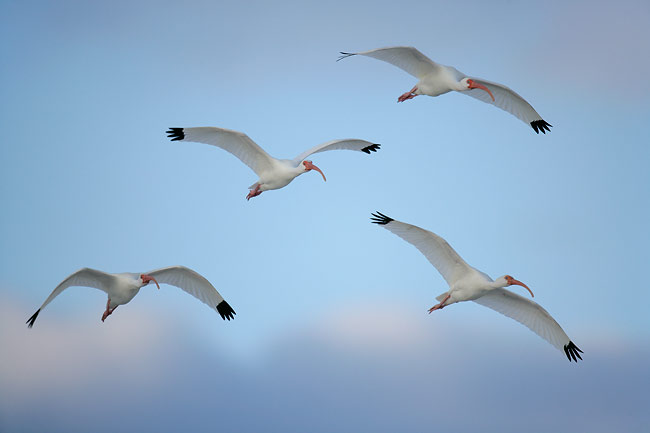
White Ibis flight quartet, Placida, Florida
Image Copyright 2007: Arthur Morris/BIRDS AS ART
Canon 600mm f/4 L IS lens with the EOS-1Ds Mark II. ISO 320.
Evaluative Metering + 1 1/3 stops: 1/1600 sec. at f/4. High Speed Synch fill flash at -1 stops with Better Beamer.
On a Grande Tours Photo Cruise, you will often encounter large numbers of wading birds returning to roost. Robert did the Photoshop on this image and with my blessings, cloned out a fifth bird that ruined the composition. Learn more about Grande Tours (the best place to spend an evening after a morning at the Venice Rookery) here: http://www.grandetours.com/photography.htm
MORE ON THE NEW EOS-1D MARK III
First off, Canon asked me to mention that they EOS 1D Mark IiI images featured in Bulletin 224 were were not created with a final production camera.
.....
Next, here is an e-mail exchange with Gary Carter. (You can learn more about Gary or plan a visit to his great NC farm here: http://www.garycarterphotos.com).
GC: Do you feel the 1Ds Mark II is a better camera than the new Mark 3?
AM: It is impossible for me to answer that question. Better for what, for whom? What are they photographing? I love my Mark II 1Ds—the files are amazing, but the frame rate, the improved AF accuracy and speed, the amazing control of noise (especially at the high ISOs), the wealth of new custom functions, the focus calibrate for each lens, and the no-more-sensor dust of the Mark III will ensure that I use mine lots. But for someone who photographs flowers and scenics the MIII may not be “worth it” (but I could never be the one to determine that). While some folks always must have the latest toy (and that is fine with me), others need to carefully evaluate the pluses and minuses of each camera body before switching or making a purchase.
GC: I've been using the 1Ds Mark II and was trying to decide whether to get two 1D Mark IIIs and sell or trade the 1Ds Mark II so that the controls on both of my camera bodies and the batteries would be the same. I do, however, like the images from the 1Ds Mark II and don't know if the Mark III's 14 bit-depth capture would make up for the difference between the Mark III's 10 MB files and the 1Ds MII's 16 MB 12 bit images.
AM: As I have said often, I do not have a great eye for fine detail (perhaps by now folks are starting to believe me when I say that…), so I am not the one to answer that unequivocally. I am trying to understand the math and do know that the Mark III files looked damned good to me even and especially at the ridiculously high ISOs.
GC: I understand that Canon wanted to announce the replacement for the 1Ds Mark II but for some reason the US market was held back.
AM: That does not sound accurate to me at all; such a camera has not been announced anywhere. I have been hearing the 22-megapixel rumors for some time now (just like everyone else). I truly know nothing on that subject but if I knew I would not even tell my mother as I would not want to jeopardize my wonderful relationship with Canon. My contract prevents me from sharing such information (on the rare occasions that I becomre privy to it).
One further consideration: as you implied above, the Mark III is quite different from the previous generations of Canon Professional Digital Camera bodies. There will be a fairly steep learning curve involved with the new body and it will be a bit tough on folks using a Mark III and one of the older bodies. The menu items, many of the controls, and the custom functions differ almost across the board. This may tempt some folks to give up their 16 megapixels for the sake of Mark III consistency.
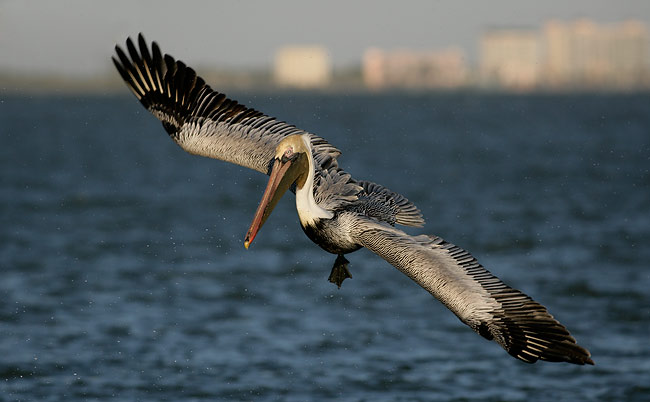
Brown Pelican ready to dive, Sanibel, FL (Ft. Myers Beach condos in background)
Image Copyright 2007: Arthur Morris/BIRDS AS ART
Canon 100-400mm IS L Zoom Lens handheld at 400 mm with the EOS-1Ds Mark II. ISO 320.
Evaluative Metering +1 stop off sky: 1/2000 sec. at f/6.3 in Manual Mode.
By refusing to quit we experienced a fantastic ending to an otherwise lousy day; I wound up with 14 family jewels-type images in a single hour, nine of them pelicans.
BAA CENTRAL FLORIDA PONTOON BOAT 5-DAY/10-CRUISE TRIP
A while back I helped good buddy, Jim Neiger, get started with his Flight School Photo Workshops. He runs them on his new pontoon boat on both Lake Blue Cypress and on West Lake Toho in Central Florida. He is doing quite well and has had folks nearly seven days a week for sevearl months now.
As a thank you he has offered to co-lead a special trip for me this spring.
What makes
this BAA Pontoon Boat-Cruise so special?
There will be two leaders on the trip: Mr Neger and Mr. Morris. On Jim’s
workshops he takes as many as five clients on the boat. I will be taking only
three participants. Both Jim and I will be photographing on the boat (for a
total of five) but it is quite roomy. Jim’s regularly scheduled workshops
inlcude a single session on the boat each day. Extra sessions on the boat
are expensive and a per-person payment is required. The very best news is
that Jim has agreed that my 5-DAY IPT shall include
ten sessions on the boat, one each morning and afternoon
(weather and winds permitting). We will most likely stay three nights in
Vero Beach using that as our
base for photographing Lake Blue Cypress for three days and then move to
Kissimmee for three nights lodging and two days of photographing on West Lake
Toho.
There should be almost countless Ospreys on Blue Cypress and there is a chance that we may get to look down into Osprey nests with small young in them; some of the nests are that low. There will be lots of flight photography and lots of birds with fish. Then we will spend two days on Lake Kissimmee photographing Snail Kites and lots more. Barred Owl, Pileated Woodpecker, and lots of wading birds are possible—even likely—at both locations. If we do really well on the boat and the Overstreet Great Horned Owl is responding well to tape we may do that for one afternoon…
As this Boat-Cruise is designed only for experienced photographers there will be no in-classroom sessions. We will, however, have lots of time after lunch for image sharing, informal critiquing, and Photoshop stuff. Jim will of course be assisting with the in-the-boat instruction and will be glad to share his tips for handholding the 500 mm lenses with you.
We will be out on the lakes pre-dawn. There are lots of great scenic opps on Blue Cypress as much of the edge is Cypress forest. And we will stay out till sunset. The weather in May can range from warm to broiling hot so we will be concentrating our photographic efforts early and late in the day.
With only three slots available, it is very likely that this trip will sell out very quickly.
Here are the details:
BIRDS AS ART Pontoon Boat- 5-DAY/10-Cruise Trip led by Arthur Morris with Captain Jim Neiger. May 28 through June 1, 2007. 5-full days: $2499. We will have dinner together in Vero Beach on the early evening of May 27. Transportation, all meals, and all lodging costs are not included.
A non-refundable deposit of $500 is required. Your deposit will be returned only if your slot is filled.
Hope that you can join me. Ps: You can see some images here: http://www.birdsasart.com/bn215.htm
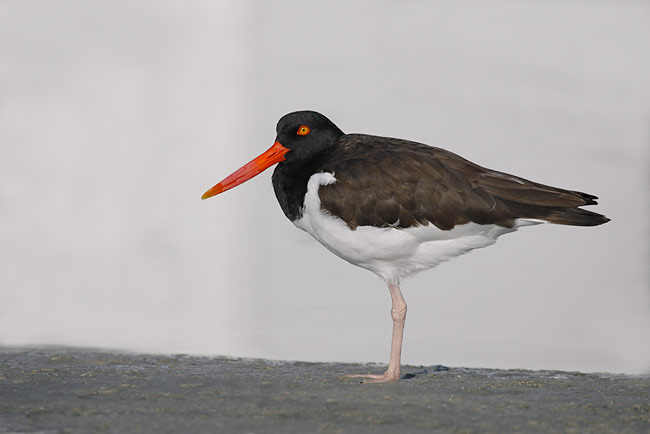
American
Oystercatcher, Little Estero Lagoon,
Image
Copyright 2007: Arthur Morris/BIRDS AS ART
Canon 100-400mm IS L Zoom Lens
handheld at 400 mm with the EOS-1D Mark IIN. ISO 250.
Evaluative Metering at
zero: 1/2000 sec. at f/8.
I was so exhausted that on
our last afternoon that I decided to head out with only the 1-4 zoom and the
1D Mark IIN . Several of us with only intermediate telephoto lenses crawled
right up to the bird while the folks with longer lenses stayed back a bit. I
wound up getting so close that I was able to create head and shoulders
portraits. I like this one becuase of the perfect head angle and the white
condo background.
ICELAND
On my birthday (June 14) this year, Robert O'Toole and I along with two clients will be flying to Iceland along with only two clients. We will be on the ground in Iceland for two weeks, flying back to the US on June 29. I have no clue as to why there was so little interest in this trip. We do have room for two more folks. If you would like to join us, please e-mail me immediately. To view a selection of reat Iceland imges, click here: http://www.birdsasart.com/iceland.htm

Alfredo “Don Diego, San Francisco” (aka: Alfred) Forns & friends, Little Estero Lagoon, Fort Myers Beach, FL
Image Copyright 2007: Arthur Morris/BIRDS AS ART
Canon 24-105mm IS L lens handheld at 50 mm with the EOS-1Ds Mark II. ISO 250.
Evaluative Metering +2/3 stops set manually: 1/1600 sec. at f/8.
I am truly blessed to have several posse members present on most IPTs. Of all the posse members, Alfred is the most highly skilled fish feeder. On a BAA IPT, we go to great lengths to get you as many great opportunities as possible.
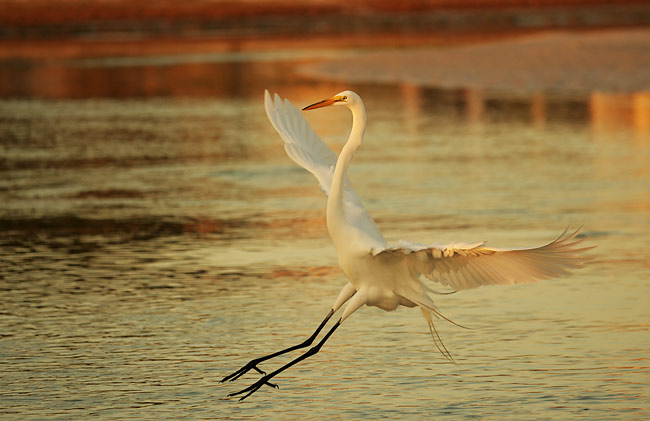
Great Egret, Little Estero Lagoon, Ft. Myers Beach, FL
Image Copyright 2007: Arthur Morris/BIRDS AS ART
Canon 100-400mm IS L Zoom Lens handheld at 190mm with the EOS-1Ds Mark II. ISO 400.
Evaluative Metering +2/3 stop: 1/640 sec. at f/5 in Av Mode.
This bird was attracted with a tossed fish. To enhance sunrise or sunset (as here) colors, try setting your White Balance to Kelvin and setting the color temperature to 9000 or 10000. (Thanks to the always-creative Robert O’Toole for that tip.)
DELKIN SENSOR SCOPE SYSTEM
When I first heard of the Sensor Scope, I scoffed. When I had dinner with Delkin's Martin Wood and Alan Parry after the San Diego IPT, they gave me a Sensor Scope system. When they weren't looking, I snickered. Fast forward one month and there is no more scoffing or snickering. In fact, I would not consider cleaning my sensor without the Sensor Scope in hand. So how come the change of heart? I tried it.
The Sensor Scope System consists of the following items:
- 1 Sensor Scope (2 CR2025 Batteries included).
- 1 SensorVac (4 AA Batteries included)
- 24 SensorWands
- 1 SensorSolution (.5 oz. bottle)
- 1 Hard Plastic Carrying Case
- 1 Cleaning Guide
The Sensor Scope looks like this:
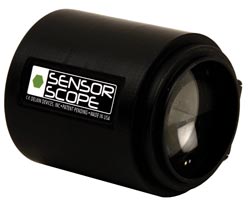
The Sensor Scope is used to see the dust and debris on the filter that covers the imaging sensor. You raise the mirror as you would for any sensor cleaning and place the Sensor Scope atop the chamber as if you were mounting a lens. The scope fits all 35mm digital SLRs. You push a square button on the side of the Sensor Scope and voila, four small bulbs illuminate the antialiasing filter. Yor view is magnified 5 times. I takes a while for your eye to be accustomed to the view and to learn to differentiate between reflections and sensor dust. Moving the camera a bit in your hand helps as sensor dust wil not appear to change its position as the small reflections do. The reflections are of small edges and items inside the chamber. Actually being able to see the location of the dust is a huge plus. First, I use my large Giotto Blower Brush and attempt to blow the sensor dust off of the sensor. Know where the dust is allows me to accurately direct the jet of air. At times, this simply moves the dust around on the sensor a bit. After each attempt I use the sensor scope to check and see how I did. The next step is to use my Lens Pen on a speck of sensor dust or two. Again, knowing the exact location of the dust particle(s) allows me to simply use the Lens Pen with an easy flick of the wrist to remove the offending speck. It is no longer necessary to clean the entire sensor with the Lens Pen. After I use the Lens Pen I use the blower again and then check my results with the Sensor Scope.
The huge plus here is that the need to make a test image after each cleaning attempt is eliminated. Sensor cleanings that previously took me a half hour or more now take two or three minutes at most. At times, I have been able to remove a single speck of dust with the Lens Pen in one attempt. How great it is not to have to clean the whole sensor but instead to be able to concentrate on only a small area or two. In addition, the Sensor Scope has enabled me to learn more about where the dust is coming from, how it gets on the sensor, and how to eliminate it. The first time I used the Sensor Scope I noticed that there was much more debris on the sensor after I used the blower brush for the first time than before. I quickly realized that the additional particles had been on the walls of the chamber, ready to be attracted to the sensor when it is magnetized (as it is every time that the camera is turned on). So whenever I clean my sensor the first thing that I do is hold the camera upside down and use the blower brush to clean the walls of the sensor. Then, by following the steps above, I am able to get my sensor cleaner faster while avoiding having to clean areas of the sensor that were clean to start with.
The first time that I used the Sensor Scope, I got my courage up and decided to try the Sensor Vac. It failed miserably; all that it did was move the dust around on the sensor... A search of product reviews on line showed that others had the same success with the Sensor Vac that I did. The Sensor Wands and Sensor Solution are simply a more expensive version of the wet method that we used and described before learning of the Lens Pens from Robert O'Toole.
In any case, the short story is that the Sensor Scope alone is an extremely valuable tool in the war against sensor dust; nobody likes spending 15 minutes per image cloning out dust spots. And not having to create and download test image after test image has reduced the time that I need to clean my sensor by 90%.
We are expecting our first shipment of Sensor Scope Systems and should have them in stock some time during the week of March 12, 2007. We would be glad to send you a Sensor Scope System for $169.99 plus $7.00 shipping.

White Ibis, Little Estero Lagoon, Ft. Myers Beach, FL
Image Copyright 2007: Arthur Morris/BIRDS AS ART
Canon 500mm f/4 L IS lens with 1.4X II TC and the EOS-1Ds Mark II. ISO 250.
Evaluative Metering at zero: 1/1250 sec. at f.8.
High Speed Synch fill flash at -2 stops with Better Beamer.
I alerted the group to a small flock of ibises that was catching one baby blue-claw crab after another (rather than their usual prey items: fiddler crabs). With the bird in the lower part of the frame a pano crop was used to save the image. Little known fact: I just hired Robert O’Toole to optimize images for me on weekends. This is one of his first efforts. Here, h skillfully added the tip of the lower mandible and a bit of the near- wing. I never thought that I would come to trust anyone to optimize my images for me but Robert is simply that good (and he is fast!)
NYC SEMINAR
Amazingly, we have already registered 57 folks for this event. There is a great possibility that this seminar will sell out well in advance. We can comfortably entertain and educate 125 folks…
The Art of Nature Photography; It Ain’t Just Birds!
Weekend How-To Seminar
The cost of the weekend seminar will be $169. The cost of either single day will be $99. Members of qualifying camera clubs are invited to apply a $10 discount. (If you are a member of a camera club or other photography organization please e-mail for details.) Register with a friend or spouse and take $10 off each registration. Register in groups of four or more and take $20 off of each registration. Get a group of ten photographers together and apply a $30 discount to each registration. (Please e-mail for group registration details.) It is highly recommend that folks purchase the buffet luncheon option ($15/day includes tip and tax) as there are no fast food restaurants nearby. Those purchasing the lunch option will receive their lunch coupon when they check in each morning.) The cost of the weekend seminar plus the two lunches is $199.
To
register, send a check for the full amount made out
to "Arthur Morris" to PO Box 7245, Indian Lake Estates, FL 33855, call with a
credit card: 863-692-0906, or send a Paypal (using either any link on our site
or your Paypal account) to us at
birdsasart@att.net In all cases, we will need your e-mail address, your
mailing address, and your daytime and evening phone numbers.
Here is our Cancellation Policy: If for any reason you need to withdraw,
please notify us ASAP. Once we receive your e-mail, phone call, or written
notice of your cancellation the following fees apply: cancel before
The doors will
open on both days at
The
seminar hotel is the Crowne Plaza JFK Hotel,
151 -20
Baisley Blvd.,
Jamaica ,
NY 11434.
The first 40 attendees who register to stay at least two nights at the
seminar hotel will receive a free Lens Pen Combo Kit—a
$20 value--plus our detailed instructions (those sent via e-mail). Room
rates anywhere in NYC are extremely high; we have negotiated a fantastic low
rate of $139 per night for those who register in a timely fashion. (The
lowest internet rate that I could come up with for the
Crowne
Plaza
was $161/night). To secure your room, please call 718-489-1000 with a credit
card in hand, state that you wish to make a BIRDS AS ART reservation, and give
them the confirmation code: BAA.
Please click here for additional details and schedule:
http://www.birdsasart.com/seminars.htm.
In August, fall shorebird migration is well underway at the nearby Jamaica Bay Wildlife Refuge. Photography at the East Pond there can be excellent, especially for those who do not mind crawling in the mud and muck. Folks joining us from out of town should strongly consider bringing their gear and doing some photography at J-BAY, one of my favorite places on the planet, and one of my three soul-places. I would advise staying on after the seminar (rather than coming in early) as the juvenile shorebirds, which can be extraordinarily tame, begin arriving in mid-August
Osprey on channel marker, Placida, Florida
Image Copyright 2007: Arthur Morris/BIRDS AS ART
Canon 600mm f/4 L IS lens with 1.4X II TC and the EOS-1Ds Mark II. ISO 400.
Evaluative Metering + 1 2/3 stops off of grey sky: 1/1000 sec. at f/5.6 set manually.
High Speed Synch fill flash at -2 stops with Better Beamer.
Captain Marian was not feeling well but the gentleman who piloted the boat for us was equally skilled at putting us in perfect position. Learn more about Grande Tours (the best place to spend an evening after a morning at the Venice Rookery) here: http://www.grandetours.com/photography.htm
IPT UPDATES
Fort DeSoto IPT: APR 13-15, 2007. Slide program on the evening of Thursday, APR 12. 3-DAY: $999 (Limit 14: openings 2.) Co-leaders: Robert O’Toole, Alfred Forns, and Robert Amoruso. Courtship and breeding behaviors of Laughing Gull and Royal and Sandwich Terns. Herons, egrets (including both dark and light phase Reddish Egret), shorebirds (including Long-billed Curlew), gulls, terns, and skimmers among others.
NEW! Fort DeSoto IPT: APR 17-19, 2007. Slide program on the evening of Monday, APR 16. 3-DAY: $999 (Limit 14; openings: 10). Co-leaders: Todd Gustafson, Robert O’Toole, and Alfred Forns. Courtship and breeding behaviors of Laughing Gull and Royal and Sandwich Terns. Herons, egrets (including both dark and light phase Reddish Egret), shorebirds (including Long-billed Curlew), gulls, terns, and skimmers among others.
NEW!
Silver Salmon Creek:
Bosque #1: "The Fall Color IPT"
Bosque #2: "The Pre-Thanksgiving IPT"
Bosque #3: "The Post-Thanksgiving IPT"
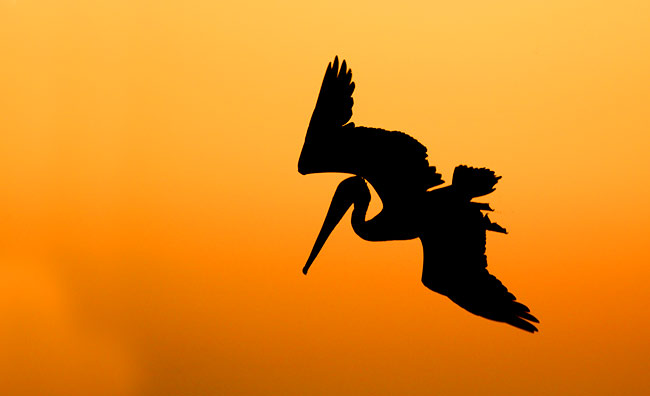
Brown Pelican, diving at sunset, Little Estero Lagoon, Ft. Myers Beach, FL
Image Copyright 2007: Arthur Morris/BIRDS AS ART
Canon 100-400mm IS L Zoom Lens handheld at 250mm with the EOS-1D Mark IIN. ISO 400.
Evaluative Metering +1 stop: 1/500 sec. at f/5.6 in Av Mode.
Can you think of a better way to end an IPT? I just wish that there was a bit of separation between the back of the bird’s head and the leading edge of the far-wing…
Best and love and great picture-making to all,
artie
Note: Arthur Morris has been a Canon contract photographer since 1994 and continues in that role today. Hunt's Photo of Boston, MA is a BAA sponsor as it Delkin Devices. Back issues of all BAA Bulletins can be found in the Bulletin Archives which may be accessed from the home page at www.birdsasart.com
